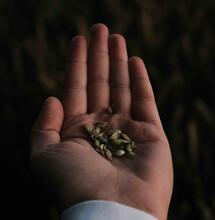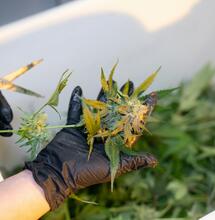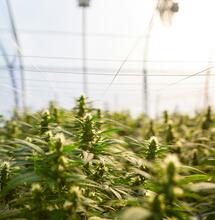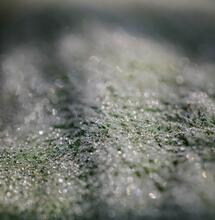HAWAIIAN LEGAL
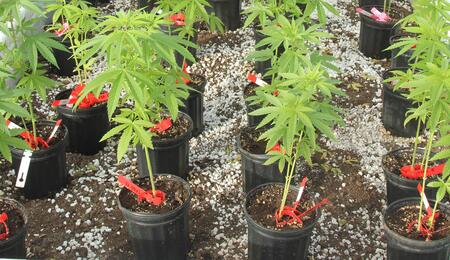
I met Jason at a marijuana and health conference in Oahu this past January. He invited me to visit his farm located on the North shore of Oahu. It serves about 100 patients. With each patient allowed 10- plants Jason Care Facility grows about 1000 plants . It’s all done in a 40 x 60 foot (12 x 18m) structure, a total of 2400 square feet (731m2). It has metal and wood framing, and is clad 6 mil double polyethylene. The side walls are 10’ (3m) high and the peak reaches 17’ (5m).
Grow with Ed Rosenthal
The main purpose of the greenhouse is to protect plants from rain and wind. The temperature range here on Oahu is considered mild so the major problems are rain and moisture. The lowest temperature occur in January when the thermometer dips into the high 60’s (20OC), but most of the time it range between the 70’s (21OC) and low 80’s (26OC and the temperature rises no higher than the high 80’s (31OC) during the summer months of June, July and August.
[caption id="attachment_37664" align="alignnone" width="1920"] The greenhouse was about 2400sq, ft. (731m2 ) It was completed in last year and is still being filled with plants.[/caption]
To prevent the “greenhouse effect”, when heat generated by sunlight heats up a closed area, the sides of the greenhouse are lifted up during the day for airflow. They are closed at night and on rainy and windy days.
Oahu is at the 21st latitude and there is only slight variation between summer and winter day length. On June 22, the longest day, there are just under 13.5 hours of light. On the shortest day, Dec. 21, it is Just under 11 hours. As a result, almost all plants start to flower soon after germination unless the length of the light period is extended.
[caption id="attachment_37665" align="alignnone" width="1920"] The canopy is uniform height because all the plants in the group are clones of a single variety.[/caption]
Lighting the plants to prevent flowering is accomplished using CFL fluorescent lights that are hung over the plants. They are controlled using a timer that turns the lights on most of the night.
Since it is so easy to manipulate the flowering cycle, there are plants in all stages of growth creating a continuous supply and continuous work-flow without requiring “bulges” of temporary workers.
[caption id="attachment_37666" align="alignnone" width="1920"] Plants in the last stage of vegetation before turning the auxiliary fluorescent lights off.[/caption]
Jason’s farm manager, Brody mentioned that the week around the full moon has a slight effect on flowering, holding the plants back a bit. I didn’t think that was the case until I looked at the full moon that night. The moon, rather than being at an acute angle in the sky is much closer to being straight overhead. It is much brighter than it is at the 37th parallel, where I usually view it.
Jason is trying out many varieties, and is especially impressed with a Chem Dog x d Durban Poison, Greenpoint Seed’s Indiana Bubblegum x Stardog and their house strain Blue Dream x Gogi OG. Patients request those varieties the most.
[caption id="attachment_37667" align="alignnone" width="1920"] Plants in the last stage of vegetation before turning the auxiliary fluorescent lights off.[/caption]
TIP OF THE MONTH
Now is the time to take clones of your favorite plants for sowing outside in a month or two. Do you or any of your buddies have any plants that you think is truly outstanding? They may be good candidates for growing outdoors. Give the clones only 18 hours of light a day with a 6-hour dark period so they don’t go into shock and immediately start to flower when placed outdoors. Give the clones moderate light until they start developing roots, about 10-15 days. Then transplant them into bigger containers
[caption id="attachment_37668" align="alignnone" width="1920"] Mature flower about to be picked.[/caption]
